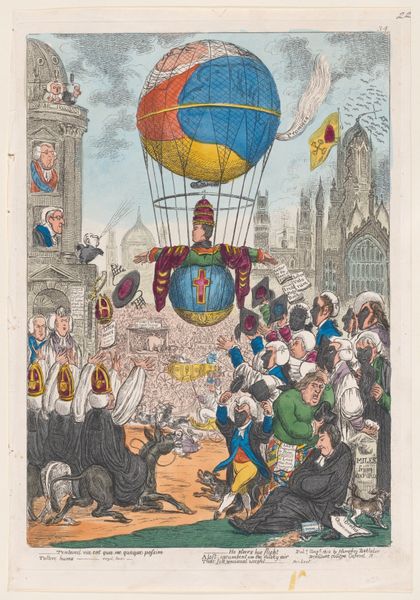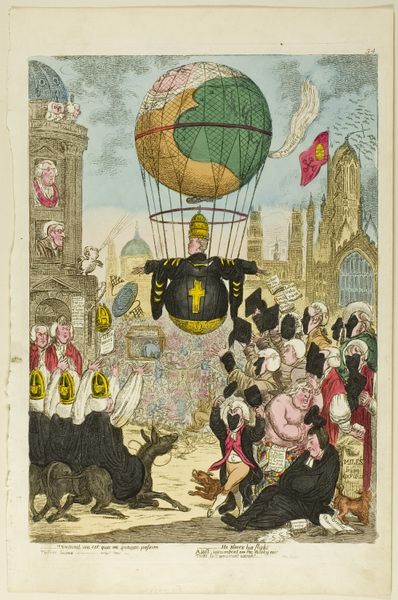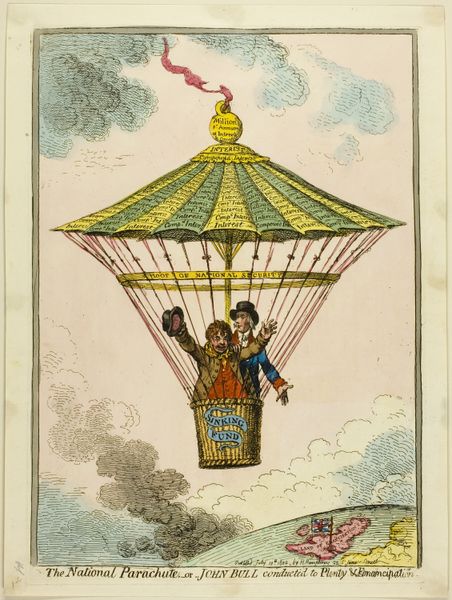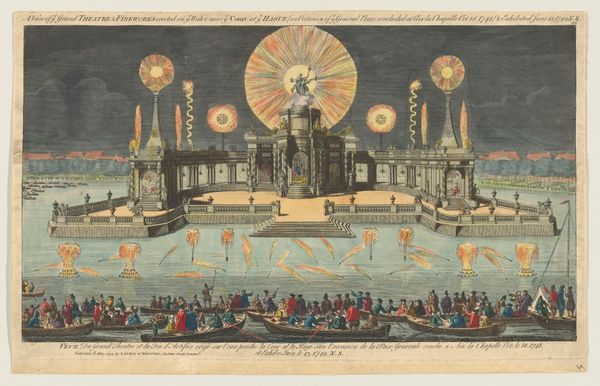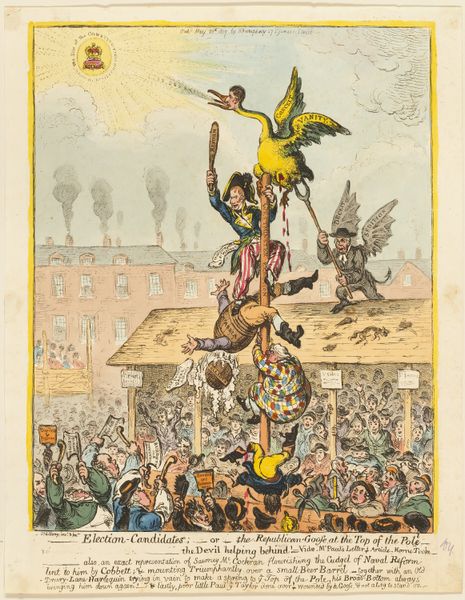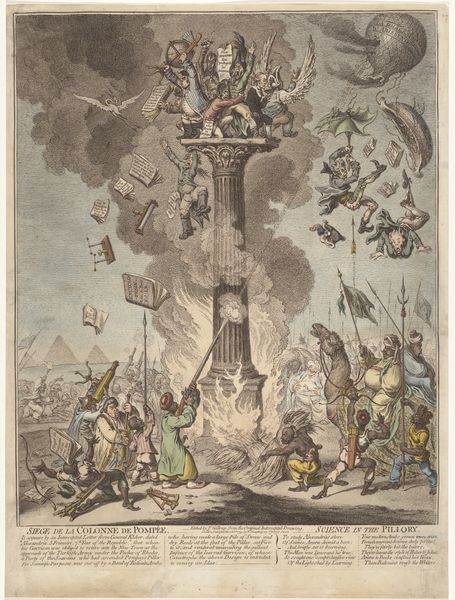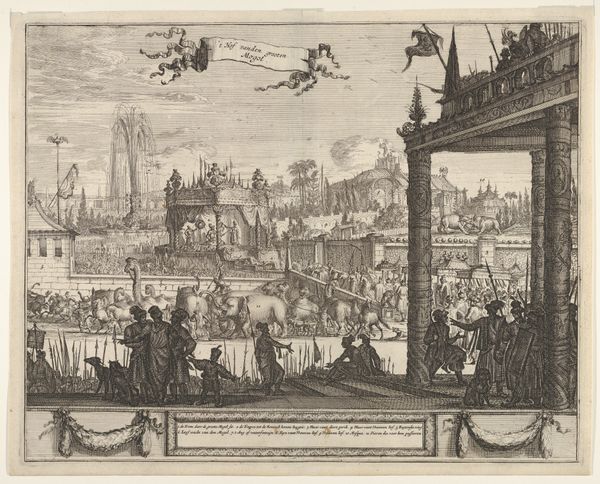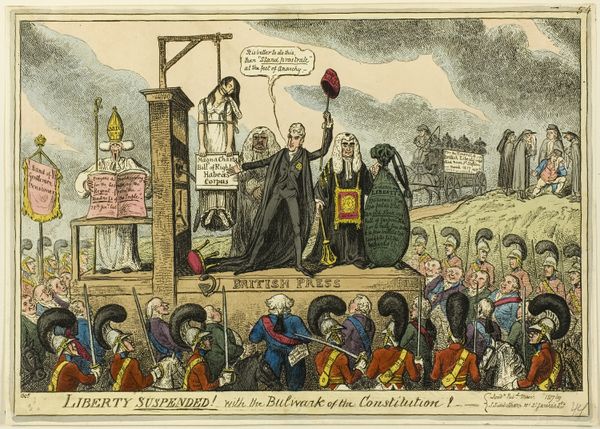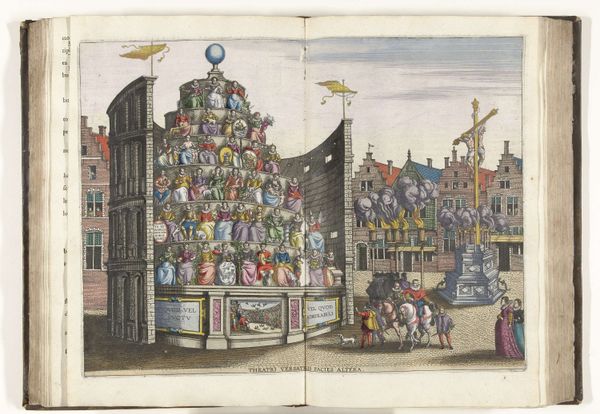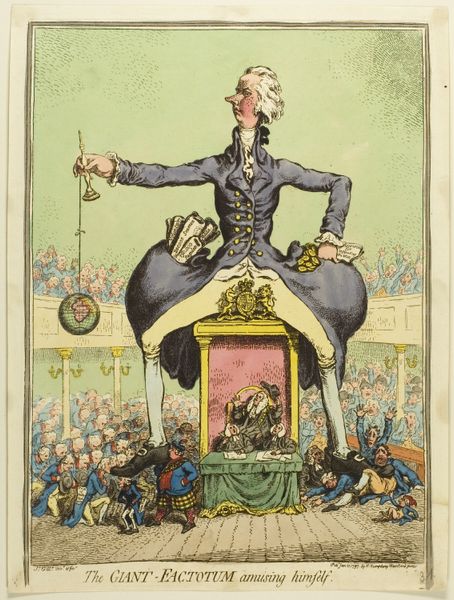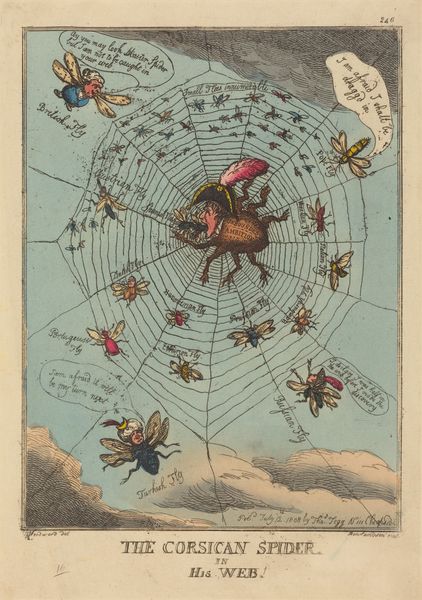
drawing, coloured-pencil, print, etching, paper
#
drawing
#
coloured-pencil
# print
#
etching
#
caricature
#
paper
#
coloured pencil
#
romanticism
Dimensions: 488 × 375 mm (image); 512 × 395 mm (plate); 525 × 415 mm (sheet)
Copyright: Public Domain
Editor: James Gillray’s "He Steers His Flight," likely from 1810, combines etching and colored pencil. It strikes me as incredibly satirical; the sheer density of detail is overwhelming. What do you see in this piece, particularly regarding its historical context? Curator: It's tempting to simply laugh, isn’t it? But Gillray's satire cuts deep. Notice how he deploys caricature not just for humour, but as a powerful critique of power structures. This print lampoons a cleric ascending in a hot air balloon shaped like the globe. It suggests, quite forcefully, that ambition and ecclesiastical authority have lost touch with earthly realities. Who do you think Gillray’s target audience might have been and how would they receive such pointed commentary? Editor: Presumably, it was intended for a literate, politically engaged public. Maybe those feeling disenfranchised by the Church’s perceived extravagance? I'm curious, does this commentary align with broader societal tensions of the time? Curator: Precisely! Gillray was working during a period of significant social and political upheaval, with the French Revolution still casting a long shadow. His art taps into widespread anxieties about corruption, power, and the role of institutions. The excess he depicts reflects the anxieties regarding wealth and hierarchy within religious authority. Also notice how he includes Latin text; it would further alienate commoners, as though to further stress religious insularity. Can you detect any contemporary parallels or related events that would give context to the symbols here? Editor: I see it now, thank you! This critique extends beyond just one person or church— it speaks to fundamental questions about social justice and accountability, and the way these impact people still in society today. Curator: Absolutely, and understanding that connection makes this more than just a historical artifact; it's a call to engage critically with the power dynamics around us today.
Comments
No comments
Be the first to comment and join the conversation on the ultimate creative platform.
